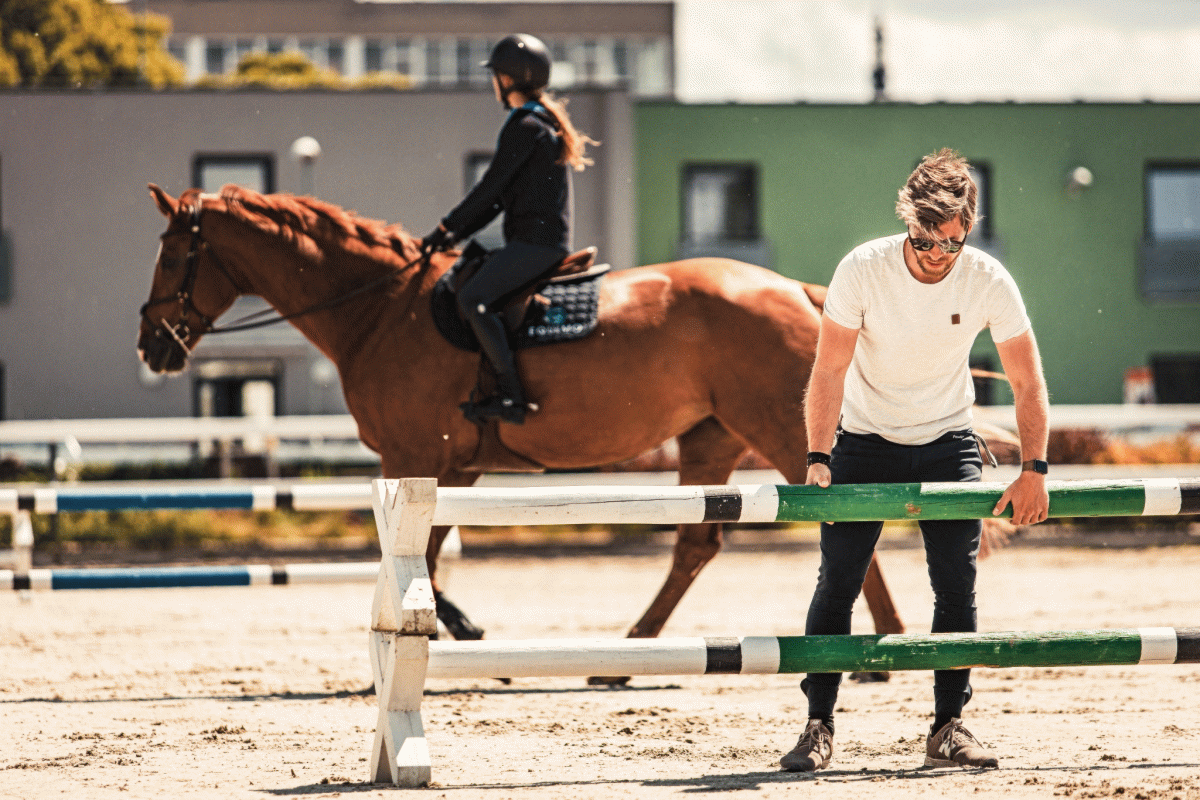
Summer has come, and most of the shows reopened within. It means the usual never-ending loop is on again: going to a competition, competing, coming home, giving your horse a few days of lighter work or rest, and then slowly building up to another show.
What does a “reasonable build-up“ from show to show mean? Most of the riders don’t jump high courses at home once the season begins; they focus on keeping their horses in good shape and a good mood, and for this purpose, they also use gymnastic exercises.
Gymnastics help your horse to improve their footwork and technique of the jump. Your horse is more aware of their body during this kind of exercise, developing a better self-awareness. Another considerable advantage of gymnastics is the strength they help to develop in horse’s hind legs and shoulders. And what is more, they give your horse an extra bit of confidence, too.
However, it is not only the horse who may benefit from such an exercise. Gymnastics and gymnastic lines also help riders to improve their position, and as with horses, they help increase confidence. Riders need to let their horses do their job, and therefore they learn to trust them more.
Before you begin your exercise, make sure you trot and canter with your horse long enough to warm them up. Then start with a single vertical, preferably with a pole in front and behind. The distance between the fence and the poles should be 3,2 m.
The line starts in trot. Three trot rails at the beginning force your horse to relax, and not to rush anywhere. They also improve balance, as from them the horse jumps into a couple of crosses just 3,2 m far from each other. These two features (poles and crosses) provide relaxed and calm entry preparing the horse and the rider for the three oxers. The first one stands 6,2 m behind the crosses, and with every other oxer, you prolong the distance by 20 cm. So if you feel like facing a more significant challenge, add another oxer to the line, but don’t forget to make the distance longer.
The first oxer is usually kept rather small. The idea is to jump this line several times on a slow height, show the horse what their job is, and make them feel good. You will probably be able to feel your horse relax after a few of these lines as they quickly learn what to do. When both you and your horse feel confident, you can start to raise the last two oxers. The last should always be the highest. You can use this line as a stretching and keep the fences low, or take advantage of the opportunity and build the last oxers a bit higher.
If you want to know exactly how high you have jumped, take a look at your EQUIMO analysis afterward. See the gradually rising height of the jumps and use this knowledge to customize the next training for your horse; make sure you do not jump higher than you intended, for example.
Have fun!